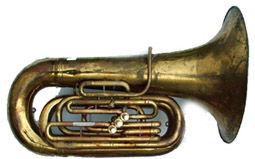Article by Moshe merkel
The Peanut Vendor song originally titled El Manisero is one of the most famous and influential Latin songs of the twentieth century. Written by Cuban composer Moisés Simons in 1928, it became the first Cuban piece to achieve major international success and helped introduce the rhythm of the rumba to audiences around the world. The song is based on the traditional street cry of a peanut seller in Havana, blending a catchy melody with the vibrant pulse of Afro-Cuban rhythm.
The first major recording was made in 1930 by Don Azpiazú and his Havana Casino Orchestra, featuring singer Antonio Machín. Its release in the United States created an immediate sensation. American listeners were captivated by its exotic sound, and The Peanut Vendor sold more than a million copies—a remarkable achievement at the time. The song marked the beginning of a craze for Cuban and Latin music in North America, paving the way for future artists such as Desi Arnaz, Xavier Cugat, and later Tito Puente.
Over the decades, countless performers have interpreted The Peanut Vendor in various styles, from jazz and swing to big-band and pop arrangements. Louis Armstrong, Stan Kenton, and Perez Prado each recorded distinctive versions, showcasing the song’s adaptability.
Beyond its popularity, The Peanut Vendor symbolizes a moment when Latin American culture entered the global mainstream. Its infectious rhythm, cheerful character, and cross-cultural appeal have kept it alive for nearly a century, making it not only a classic of Cuban music but also a cornerstone of popular music history. The Peanut Vendor song was arranged for Piano Trio, string quartet and many other classical music ensembles. Peanut Vendor arrangement for Piano Trio was published on 2022 and performed and recorded by the Atar Trio Jerusalem. Other versions are being published on sheet music over the recent decades and became well known as classical / jazz concert music.
The Peanut Vendor song originally titled El Manisero is one of the most famous and influential Latin songs of the twentieth century. Written by Cuban composer Moisés Simons in 1928, it became the first Cuban piece to achieve major international success and helped introduce the rhythm of the rumba to audiences around the world. The song is based on the traditional street cry of a peanut seller in Havana, blending a catchy melody with the vibrant pulse of Afro-Cuban rhythm.
The first major recording was made in 1930 by Don Azpiazú and his Havana Casino Orchestra, featuring singer Antonio Machín. Its release in the United States created an immediate sensation. American listeners were captivated by its exotic sound, and The Peanut Vendor sold more than a million copies—a remarkable achievement at the time. The song marked the beginning of a craze for Cuban and Latin music in North America, paving the way for future artists such as Desi Arnaz, Xavier Cugat, and later Tito Puente.
Over the decades, countless performers have interpreted The Peanut Vendor in various styles, from jazz and swing to big-band and pop arrangements. Louis Armstrong, Stan Kenton, and Perez Prado each recorded distinctive versions, showcasing the song’s adaptability. Beyond its popularity, The Peanut Vendor symbolizes a moment when Latin American culture entered the global mainstream. Its infectious rhythm, cheerful character, and cross-cultural appeal have kept it alive for nearly a century, making it not only a classic of Cuban music but also a cornerstone of popular music history. The Peanut Vendor song was arranged for Piano Trio, string quartet and many other classical music ensembles. Peanut Vendor arrangement for Piano Trio was published on 2022 and performed and recorded by the Atar Trio Jerusalem. Other versions are being published on sheet music over the recent decades and became well known as classical / jazz concert music.


